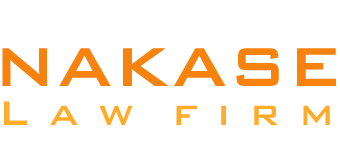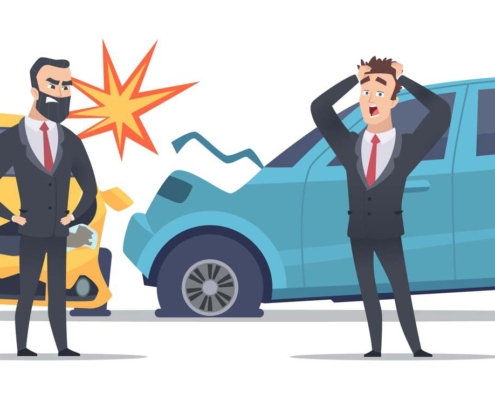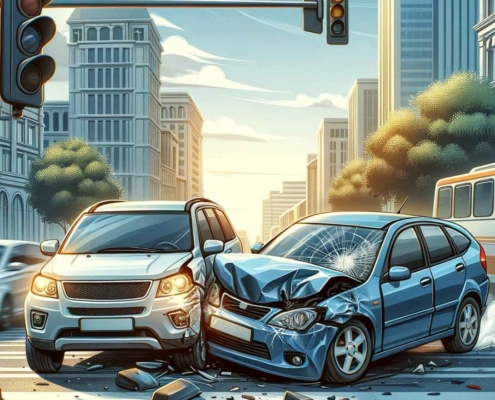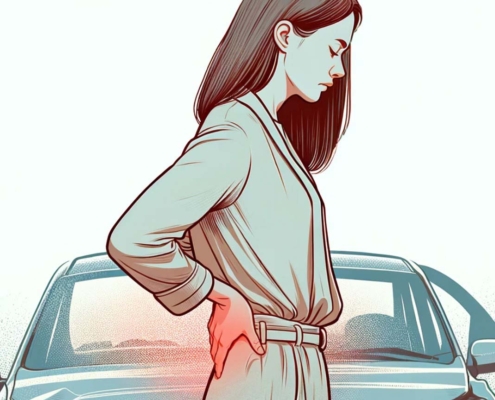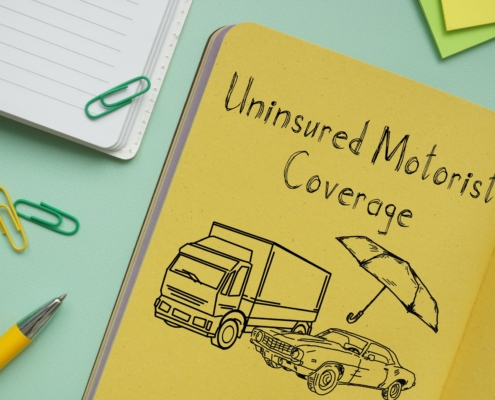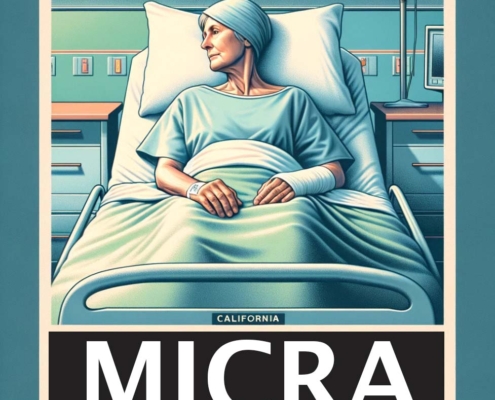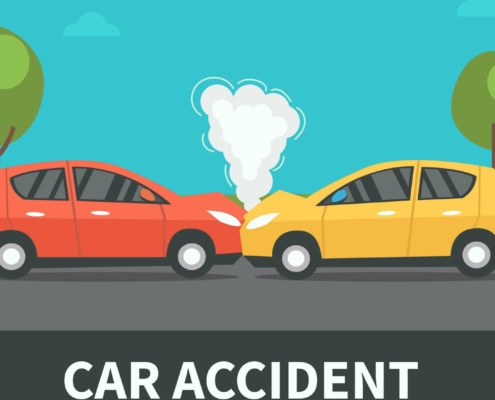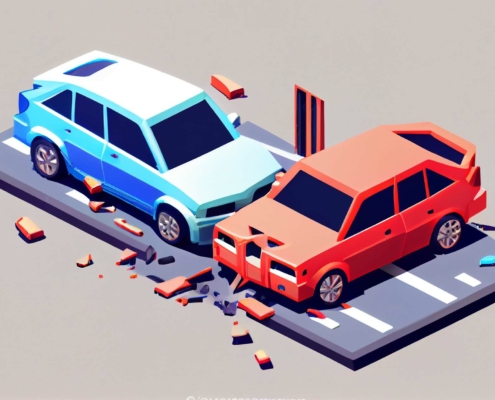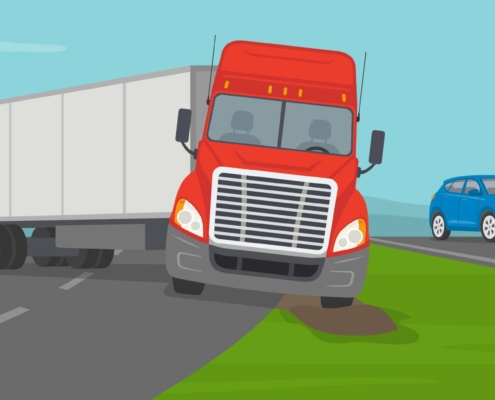How much will my insurance go up with an at-fault accident?
The national average full coverage premium increase is 42 percent following an at-fault accident. The more traffic tickets and accidents you have had in the last three years, the higher your insurance rates increase.
By Brad Nakase, Attorney
Email | Call (888) 600-8654
Get Smarter: Search my blogs
Introduction
Your auto insurance rate will likely increase after you get into an accident and file a claim. The insurance rate increase will depend on the accident’s severity, meaning how much your insurance company pays out.
Insurance premiums act as a critical component of the driving experience, providing financial security in the face of unforeseen circumstances. While insurance is a necessary investment, the possibility of increased premiums after an accident can lead to stress and uncertainty for drivers already dealing with the fallout of a collision. With its high population density and notoriously congested roads, California presents a unique set of challenges when it comes to navigating the insurance landscape.
This article our car accident lawyers delve into the concerns shared by California drivers about their insurance premiums following an auto accident. Below we will explore the factors contributing to rising premiums, the regulations governing insurance practices in the state, and strategies drivers can employ to mitigate potential premium increases. This knowledge can help California drivers make informed decisions and alleviate some of the anxiety surrounding post-accident insurance challenges.
How much does insurance increase after an accident?
Statistics indicate that, on average, insurance premiums increase by around 42% when an injury results from an accident, with an average dollar increase of $585. However, it’s important to note that the actual increase can vary based on several factors.
The aftermath of a car accident can leave California drivers worrying not only about their physical well-being but also about the potential impact on their insurance premiums. Understanding how much car insurance goes up after an accident is crucial for drivers seeking to manage their finances effectively.
One of the primary factors influencing the rise in insurance rates is the driver’s history. Insurance providers typically consider an individual’s past driving record when assessing the risk associated with insuring them. If the driver has a history of accidents or traffic violations, the likelihood of increased premiums becomes higher.
Another significant factor is the degree of fault assigned in the accident. California follows a comparative negligence system, meaning that the responsibility for an accident can be divided among multiple parties. If the driver is deemed at fault for the accident, their insurance rates are more likely to increase compared to someone who is determined to be less responsible or not at fault.
The number of miles driven can also impact insurance rates. Insurers often consider the distance traveled annually, as drivers who spend more time on the road statistically have a higher risk of being involved in an accident.
Fortunately, some insurance providers offer accident forgiveness programs, which can help mitigate the potential increase in premiums following an accident. Accident forgiveness typically ensures that an individual’s rates will not increase after their first at-fault accident. This feature can provide peace of mind for drivers concerned about the financial repercussions of an accident.
In addition, safe-driving programs can help drivers lower their insurance rates. Many insurers offer incentives for policyholders who maintain a clean driving record and exhibit safe driving habits. These programs often involve the use of telematics devices that track driving behavior, such as speed, braking patterns, and adherence to traffic rules. By demonstrating safe driving habits, drivers may qualify for discounts or lower premium rates.
After an accident, a claims adjuster conducts an inspection to assess the damage and determine the appropriate coverage. The adjuster will typically evaluate the extent of the damage, gather information from involved parties, review police reports, and potentially visit the accident scene. They may also examine any medical reports or repair estimates to accurately assess the financial implications for the insurance provider. Based on these findings, the adjuster determines the coverage amount and the impact on the driver’s insurance premiums.
By being aware of the above factors and seeking information from their insurance providers, California drivers can make informed decisions and better manage their insurance premiums in the aftermath of an accident.
How does fault affect insurance rates after an accident?
Car insurance premium increases after at-fault accidents go up 42% on average. Insurance Rate increases will go up more if there are property damage to another person’s car or injuries. However, if you are not at fault the rate will unlikely increase.
In California, drivers can find some comfort in knowing that their insurance premiums typically will not go up after an accident if they are not at fault. This insurance practice provides a level of protection for innocent drivers who find themselves involved in accidents caused by the negligence of others. When an accident occurs and the driver is not deemed responsible, insurance companies generally do not penalize them by raising their premiums.
The reason for this policy is rooted in California’s comparative negligence system. Under this system, fault for an accident can be shared between multiple parties involved. It recognizes that accidents can occur due to the actions or negligence of more than one driver. In such cases, each driver’s degree of fault is assessed, and their liability for the accident is determined accordingly.
For example, if an accident occurs where both drivers are found to share equal fault, they would each be considered 50% at fault. In this scenario, each driver would bear responsibility for their respective portion of the damages and injuries. This system allows for a fair allocation of liability based on the degree of fault attributed to each party.
However, it is important to note that insurance rates can still increase if a driver is found partially at fault for an accident. For instance, if a driver is determined to be 20% at fault for an accident, their insurance rates may increase to reflect that level of responsibility. The increase, in this case, would be proportional to the degree of fault assigned.
It is also worth mentioning that determining fault and liability in accidents can be a complex process. Insurance companies typically conduct investigations and rely on evidence such as police reports, witness statements, and expert opinions to assess the circumstances of the accident. It is crucial for drivers involved in accidents to cooperate with their insurance companies during the investigation process to ensure a fair evaluation of fault.
The state’s comparative negligence system offers some protection to drivers who are not at fault for an accident by preventing their insurance premiums from increasing due to the actions of others. That said, it is essential to understand that fault can be shared, and drivers may still face increased rates if they are found to have some level of responsibility. By being aware of the state’s comparative negligence system and working closely with their insurance providers, California drivers can navigate the complexities of fault and liability determination after an accident.
When does car insurance go down after an accident?
There is definitive time frame for when insurance rates go down after an accident. Generally, the timeframe for insurance rates to decrease following an accident is between 3 to 5 years, assuming the driver maintains a clean driving record during that period. This time frame allows insurance companies to assess the driver’s post-accident behavior and determine the appropriate premium based on their improved risk profile.
Apart from the passage of time, there are several proactive steps that drivers can take to lower their car insurance premiums:
- Shop around for better rates: Insurance rates can vary significantly between providers. Taking the time to research and compare rates from multiple insurance companies allows drivers to identify potential savings. Online comparison tools and contacting insurance agents directly can help in finding the best rates available.
- Adjust the deductible: The deductible is the amount the policyholder is responsible for paying out of pocket before the insurance coverage kicks in. By increasing the deductible, drivers can lower their premium. However, it is important to ensure that the chosen deductible is affordable in case of an accident.
- Lower coverage: Evaluating the coverage options and considering one’s specific needs can help in reducing insurance premiums. For example, if the car’s value has significantly decreased or if the driver has alternative means of transportation, adjusting coverage limits, such as lowering comprehensive or collision coverage, can result in lower premiums.
- Improve credit score: In many states, including California, insurance companies can consider credit scores when determining premium rates. Maintaining a good credit score can lead to lower insurance premiums. Paying bills on time, reducing debt, and managing credit responsibly can help improve creditworthiness and potentially lower insurance costs.
One should note that these strategies may not be applicable or beneficial in every situation. The impact on premiums can vary based on individual circumstances, driving history, location, and other factors. Consulting with an insurance agent or broker can provide personalized guidance and help drivers identify the best approach for lowering their specific insurance premium.
Can you cancel your insurance coverage after an accident?
While this is possible, canceling your insurance coverage after a car accident in California is generally considered a bad idea for several important reasons:
- Legal Requirements: California law mandates that all drivers carry auto insurance coverage. Cancelling your insurance after an accident would leave you in violation of the law, potentially resulting in penalties, fines, and even the suspension of your driver’s license. It is vital to maintain continuous coverage to comply with legal requirements and avoid legal consequences.
- Financial Liability: If you cancel your insurance coverage after an accident, you will be personally responsible for all costs and damages resulting from any future accidents or incidents. Without insurance, you would have to bear the entire financial burden of property damage, medical expenses, and legal costs, which can be substantial and lead to severe financial hardship.
- Future Insurance Rates: Insurance companies consider a driver’s insurance history and coverage lapse when determining premium rates. If you cancel your coverage after an accident, it creates a gap in your insurance history, which may result in higher rates or difficulties obtaining coverage from other insurance providers in the future. Continuously maintaining insurance demonstrates responsible behavior and can help you secure better rates in the long run.
- Unforeseen Circumstances: While you may be tempted to cancel your insurance immediately after an accident, it is important to consider potential future incidents or accidents. Accidents can happen at any time, and being uninsured leaves you vulnerable to unexpected expenses and legal complications. It is prudent to maintain coverage to protect yourself and your financial well-being in case of any future incidents.
- Coverage for Non-Accident Related Events: Car insurance provides coverage not only for accidents but also for events such as theft, vandalism, natural disasters, and other unforeseen circumstances. Canceling your insurance would leave you without protection for these events, potentially leaving you vulnerable to significant financial losses.
Can you sue your car insurance company after an accident?
Suing an insurance company after a car accident is a complex matter that typically arises when there is a dispute between the policyholder and the insurer. While specific circumstances may vary, there are certain situations where individuals may consider taking legal action against their insurance company. One such circumstance is when the insurance company engages in unfair or deceptive practices, which can include unreasonably raising rates following an accident. Let’s review some circumstances that may lead to a lawsuit against an insurance company:
- Unreasonable Rate Increases: If an insurance company significantly and unjustifiably raises rates after a car accident, policyholders may feel that the increase is unfair or disproportionate to the incident’s severity. While rate increases are common after accidents, if the raise is excessive or lacks valid justification, it might be grounds for legal action.
- Coverage Denial or Delay: If an insurance company wrongfully denies a claim or unreasonably delays the claims process without proper justification, policyholders may choose to sue the insurer. This can occur when the insurer unfairly determines that the accident falls outside the coverage scope or disputes liability without adequate investigation.
- Bad Faith Practices: Insurance companies have a legal obligation to act in good faith and fairly handle claims. When an insurer engages in bad faith practices, such as intentionally undervaluing a claim, unreasonably delaying payment, or failing to investigate a claim properly, policyholders may have grounds for a lawsuit.
- Breach of Contract: Insurance policies are contractual agreements, and both parties have specific obligations. If the insurance company fails to fulfill its contractual obligations, such as refusing to provide coverage that is clearly outlined in the policy, policyholders may have a basis for a lawsuit.
- Fraud or Misrepresentation: In some cases, policyholders may discover that the insurance company has engaged in fraudulent or deceptive practices. This can involve misrepresenting policy terms, providing false information, or manipulating documents. If such misconduct is proven, it may be grounds for legal action against the insurer.
When considering suing an insurance company, it is crucial to consult with an experienced attorney who specializes in insurance law. They can assess the specific circumstances of the case, review the policy details, and advise on the viability of a lawsuit. Laws regarding insurance practices and litigation can vary by jurisdiction, so it is important to consult an attorney familiar with the relevant laws and regulations in California.
What questions should you ask an insurance adjuster after an accident?
When communicating with an insurance adjuster after a car accident, it is essential to gather the necessary information and fully understand the claims process. Asking the following questions can help you navigate the situation effectively:
- What is your name and contact information? Obtaining the adjuster’s name, phone number, and email address ensures you have the necessary details to reach out to them throughout the claims process.
- What is the claim number assigned to my case? A claim number serves as a reference for your specific case and allows both parties to track the progress of your claim easily.
- What is the timeline for processing my claim? Asking about the estimated timeline gives you an understanding of when you can expect updates, payments, or any other relevant information related to your claim.
- What documents or evidence do you need from me? Asking about the specific documents or evidence required for your claim helps ensure you provide all necessary information promptly. This may include police reports, medical records, repair estimates, or photos of the accident scene.
- What is the process for determining fault or liability in the accident? Understanding how the insurance company assesses fault or liability can provide insight into how your claim will be evaluated. This can involve discussing the role of police reports, witness statements, and other evidence.
- What is the coverage and policy limit for my claim? Clarifying the coverage and policy limit ensures you have a clear understanding of the financial aspects of your claim and any potential limitations that may affect your compensation.
- Are there any additional benefits or coverage options I may be entitled to? Asking about additional benefits or coverage options, such as rental car reimbursement or medical expense coverage, can help maximize your claim and ensure you are aware of all available resources.
- How will the claims process impact my insurance premium? Understanding the potential impact on your insurance premium can help you plan and budget accordingly. Ask about any potential rate increases or changes in your policy terms due to the accident.
- What is the best way to communicate and provide updates on my claim? Ensure you know the preferred communication method for the adjuster and how often they would like to receive updates or additional information from you.
- What steps can I take to expedite the claims process? Requesting assistance on actions you can take to streamline the claims process demonstrates your proactive approach and commitment to resolving the claim efficiently.
Have a quick question? We answered nearly 2000 FAQs.
See all blogs: Business | Corporate | Employment Law
Most recent blogs:
Contact our attorney.
